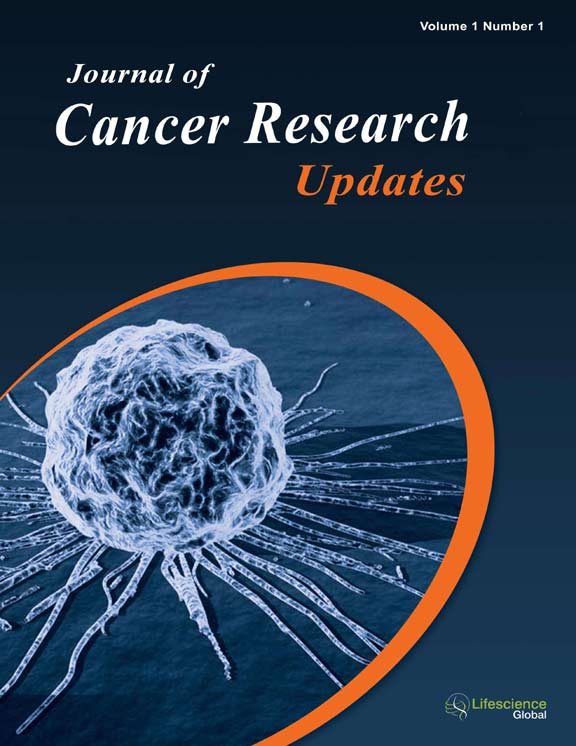jcru
Editor's Choice : A Guide for Pain Management in Developing Nations: The Diagnosis and Assessment of Pain in Cancer Patients
|
|
Abstract: The fundamental approach to cancer patients with pain is to identify the pain sites, and describe, quantify, and categorize the pain by type at each site. There are many validated tools to serve the clinician in these efforts, particularly for pain assessment. Multimechanistic pain syndromes are common in cancer patients. Cancer patients may experience nociceptive pain. They may also experience neuropathic pain due to chemotherapy-induced or cancer-related nerve damage. Analgesic choices must be guided by the pain mechanisms, nature, and severity of the pain, comorbid conditions, and patient characteristics. Long-acting opioid analgesics or fixed-clock dosing can eliminate end-of-dose analgesic gaps. The potential for opioid abuse is an important public health challenge but one that should not undermine the appropriate treatment of moderate to severe cancer pain. Abuse-deterrent opioid formulations can be useful. Care is needed for special populations of cancer patients dealing with pain, such as geriatric, pediatric, or obese patients. While morphine has long been the “gold standard” of oral opioid products, recent clinical trials suggest that oral hydrocodone and oral oxycodone may offer advantages over oral morphine. Patient adherence is crucial for adequate analgesia and patient education can promote adherence and manage expectations. Keywords: Cancer pain, malignant pain, opioid analgesia, opioids, undertreatment of cancer pain, assessment of cancer pain. Download Full Article |
Editor's Choice : 18F-FDG PET/CT Imaging in Detection of Intravascular Large B-Cell Lymphoma
|
|
Abstract: Intravascular large B-cell lymphoma (IVLBCL) is a rare type of extranodal large B-cell lymphoma. Now, it remains a diagnostic challenge, because of non-specific findings on clinical, laboratory, and imaging studies. Here we present a case of an IVLBCL patient, who presented with fever of unknown origin and had skin involvement, that 18F-FDG PET/CT showed increased metabolism on systemic subcutaneous fat layer with a SUVmax of 1.29. After five courses of R-CHOP, 18F-FDG PET/CT showed disappearance of the diffuse FDG accumulation on systemic subcutaneous fat layer with a SUVmax of 0.55. These features make this case unique. Keywords: Lymphoma, Fever, 18F-FDG, PET/CT. Download Full Article |
Editor's Choice : Oxycodone Immediate Release for Cancer Pain Management in Turkey: Maximizing Value in Opioid Analgesics
|
|
Abstract: Cancer pain can be severe, yet is often undertreated. In many parts of the world, there is a reluctance to prescribe narcotics for analgesia. Since the World Health Organization first published its “pain ladder” treatment paradigm in 1988, cancer pain is usually treated initially with nonopioids, then weak opioids, and finally strong opioids along with adjuvant agents as the pain intensifies. When initiating opioid therapy for cancer patients, the clinician must consider whether the patient is opioid naïve or opioid experienced. For naïve patients, opioid therapy must be started slowly, at a low dose initially, with adverse events anticipated and treated proactively. In all cases, opioid titration involves a controlled, stepwise increase of opioid dose until adequate (but not necessarily 100%) analgesia is achieved. A variety of opioid products are available, including immediate-release and controlled-release formulations. Immediate-releaseformulations are designed for easy titration to adequate analgesia; their rapid onset of action also makes them appropriate for managing breakthrough pain. Although morphine has long been considered the “gold standard” of cancer analgesics, oral oxycodone is increasingly used and is similar to morphine in efficacy and safety for cancer patients. Indeed, about 75% of morphine-tolerant patients can be successfully rotated to oxycodone. Adverse events with oxycodone are similar or perhaps favorable compared to those of other strong opioids. Because cancer pain can be challenging to treat, the addition of oral oxycodone IR is an important new tool for clinicians to consider when trying to control cancer pain. Keywords: Cancer pain, oxycodone IR, new opioids, cancer in Turkey, analgesia in oncology.Download Full Article |
Editor's Choice : The Association of Genetic Polymorphisms of TNFα, TNF-R1, and TNF-R2 and Lung Cancer Chemotherapy Response
|
|
Abstract: Platinum-based therapy is commonly used for the treatment of lung cancer and has been widely accepted by clinicians, but the chemotherapy responses differ greatly among individuals. TNFα/TNF-R1/R2 signal pathway can trigger the extrinsic pathway of apoptosis after DNA damage was caused by platinum-based treatment. The aim of this study was to investigate the association of TNFα -308 A/G, TNF-R1 -383A>C, -609T>G and TNF-R2 +676 T>G and the response of platinum-based chemotherapy in 313 Chinese advanced-stage non-small-cell lung cancer (NSCLC) patients. MassARRAY was used to detect these four SNPs in three apoptosis-related genes. TNFα -308 A/G was significantly correlated with better clinical benefit. Patients carrying A allele tended to have a favorable prognosis after treated with platinum-based chemotherapy (P=0.043, OR=0.488, 95%CI=0.244-0.979). The patients with CA genotype have significantly reduced risk of platinum resistance compared with wild-type homozygotes CC genotype (P=0.025, OR=0.447, 95% CI=0.220-0.906). No association was found in other polymorphisms. In conclusion, our data suggest that TNFα -308 A/G polymorphism may serve as the indicator of platinum-based chemotherapy response in NSCLC patients. Keywords: TNFα, TNF-R1, TNF-R2, chemotherapy response, genetic polymorphism, lung cancer.Download Full Article |






















